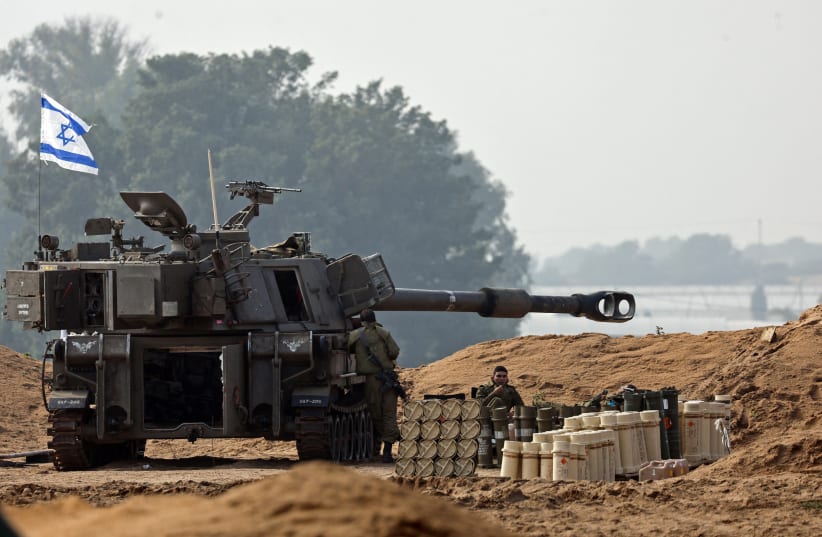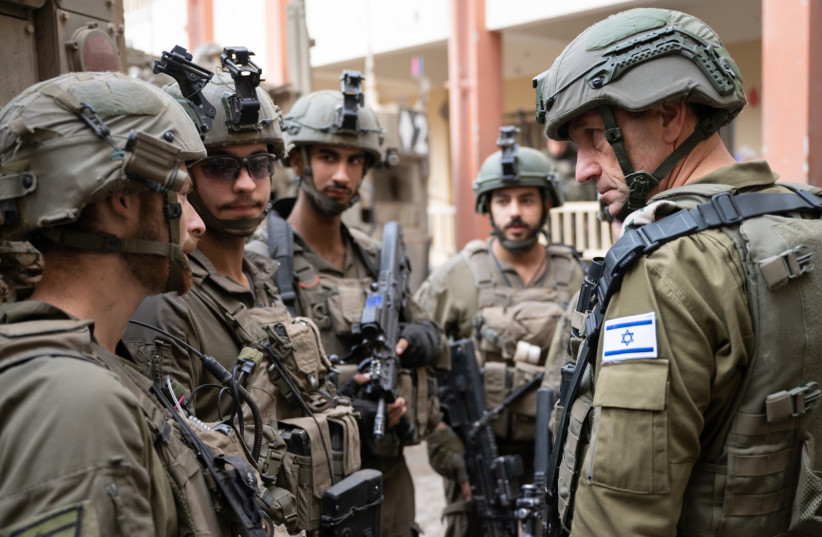Four soldiers from the 603rd Engineering Battalion, Combat Engineering Corps, as well as an additional officer from Golani's 12th Battalion, were seriously injured in battle in the southern Gaza Strip, according to a report by the IDF.
Another three were injured in a separate battle in the southern Gaza Strip.
All were evacuated for immediate medical treatment, with their respective families informed.
IDF's 12th Battalion commander hurt in Gaza fighting
One of the injured was the lieutenant colonel and commander of the 12th Battalion, who had already replaced the previously injured commander.
This came a day after 10 IDF soldiers were killed and six were wounded, marking a series of difficult days in terms of IDF soldier casualties.
Despite those benchmarks, only 12 rocket sirens sounded on Thursday, with no hits, and many of the rockets were in the North, marking a low for rockets from Hamas in the recent time period since the late November temporary ceasefire.
There were at least three rounds of exchanges of fire between the IDF and Hezbollah in the North, with the Lebanese terror group attacking with rockets and anti-tank missiles and the IDF striking back with air strikes and artillery.
However, there were fewer public statements about escalation from the sides as the week wore on.
Defense Minister Yoav Gallant on Thursday told US National Security Adviser Jake Sullivan that it will take more than a few more months to finish off the Gaza War with Hamas.
Although this would seem to pit Israel in serious tension with the US timeframe for finishing the war in the coming weeks, the Jerusalem Post has clarified that Gallant was referring to the expected counter-insurgency stage of fighting Hamas.
In other words, Gallant and other defense officials would still stand by the end of January as an expected endpoint for the main invasion will the full volume of multiple IDF divisions involved.
Rather, even after the main invasion is considered concluded and IDF forces in Gaza are reduced to a number which can be maintained over a longer period, it has been expected that the IDF will need to fight smaller battles against insurgents for three to nine months.
The defense minister explained that Hamas had spent years creating its terror forces and infrastructure and that taking all of this vast network apart, would require much longer than the initial full invasion stage.
Gallant thanked the US "for its unqualified support."
Sullivan is visiting Israel at a critical point in the conflict with the Biden administration seeking to decide how much longer it will go on protecting Israel from global pressure for an immediate ceasefire. In addition, the two governments have engaged in a series of unusually public jabs at each other about if and to what extent the Palestinian Authority will be involved in running Gaza once Israel withdraws.
In addition, the defense minister said he discussed with Sullivan the question of how to neutralize the threat posed to Israel by Hezbollah in the North.
Along with that issue, Gallant explained how important it is to create new security realities which will allow Israel's tens of thousands of evacuees from the North to return to their homes.
The US has significantly pressured Israel not to engage in a broader fight with Hezbollah and Jerusalem has hoped that Washington will repay some of its restraint by leaning hard on the terror group to keep its forces farther away from the northern border than it has since the 2006 Second Lebanon War.
After that war, UN Security Council Resolution 1701 mandated that Hebzollah stay out of southern Lebanon, but shortly after, the group systematically violated those limits.
In addition, Gallant said Israel welcomes a global approach to holding off maritime threats from the Yemen Houthis, though he said any attack on an actual Israeli ship would lead to a direct Israeli response.
Trying to bring down Gaza’s top leaders, the IDF distributed flyers across Gaza on Thursday, promising huge rewards to anyone who would provide information on the locations of senior Hamas leaders hiding in the Strip.
The flyers state that $400,000 is being offered for information on Hamas leader in Gaza, Yahya Sinwar, and $300,000 for his brother Muhammad Sinwar.
A lower reward, worth $200,000, will be awarded by the IDF to those who provide information on the location of Rafa Salama, the Khan Yunis Brigade commander; for the location of Mohammed Deif, the head of Hamas's military wing, the army will give $100,000.
"Confidentiality is guaranteed," the IDF states in the flyer, and a phone number is provided to call.
IDF makes progress in Gaza's north and south
Also, on Thursday, the IDF made slow but steady progress in both northern and southern Gaza.
IDF troops from the 460th Combat Brigade of the 162nd Division operated in the Kamal Adwan Hospital area with the Shin Bet, with scores of Hamas terrorists being killed or detained.
During the operation, the IDF troops located a building close to the hospital that was being used by Hamas terrorists. An exchange of fire took place, in which a number of Hamas terrorists were killed.
Some 70 terrorists surrendered and left the building with their weapons and were detained and taken for interrogation by the Shin Bet.
This was one of several rounds of large-scale surrenders in recent days, though IDF sources indicate Hamas is still far from completely cracking.
Kamal Adwan Hospital is in the Beit Lahiya area north of Gaza City, near the Israeli border.
In mid-October, various media outlets quoted Hussam Abu Safiya, head of pediatrics at the hospital in northern Gaza, saying it did not evacuate despite calls to do so by Israel. The UN had warned at the time that hospitals would run out of fuel in two days on October 15.
The fuel continued to flow despite the warnings. On November 4, CNN reported that “MedGlobal, a US-based organization that supports local health programs for vulnerable populations across the globe, issued an urgent appeal for fuel to power a generator at Kamal Adwan Hospital in northern Gaza.”

